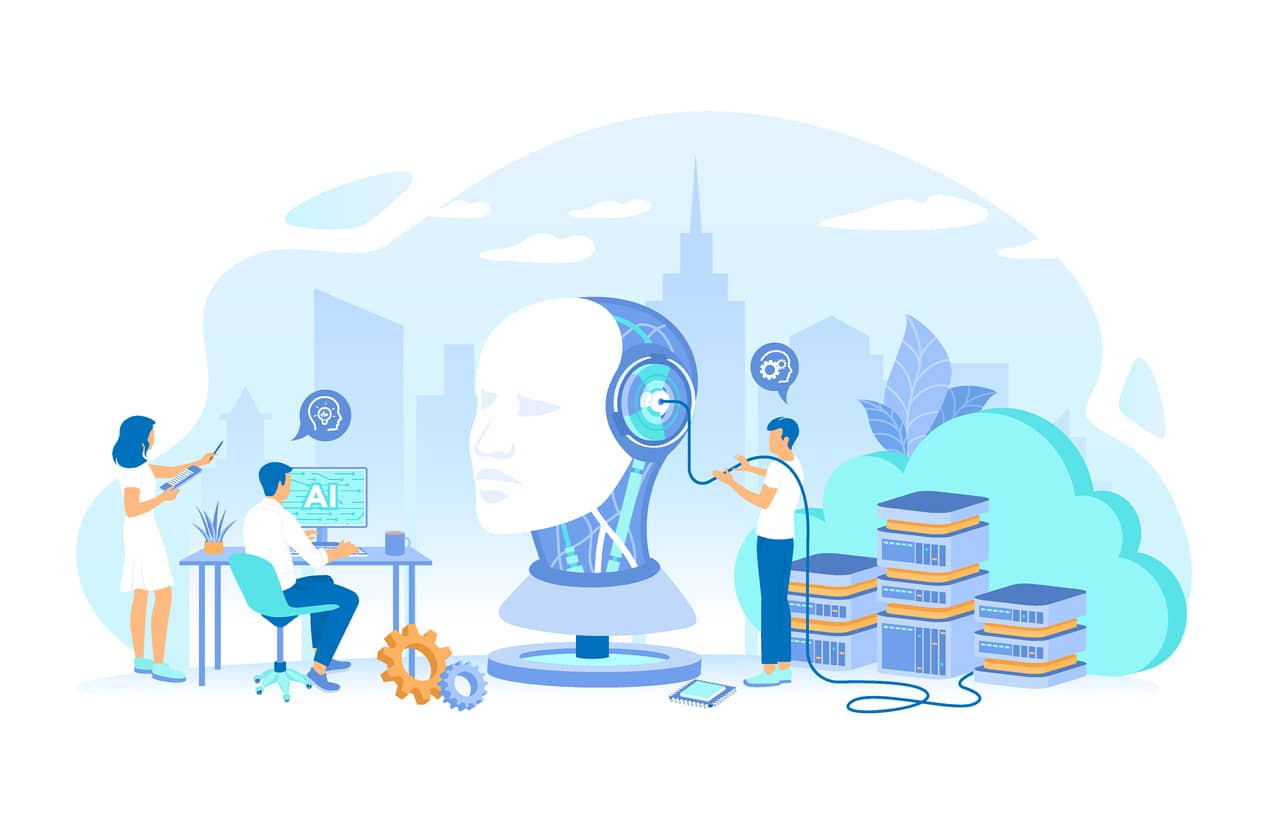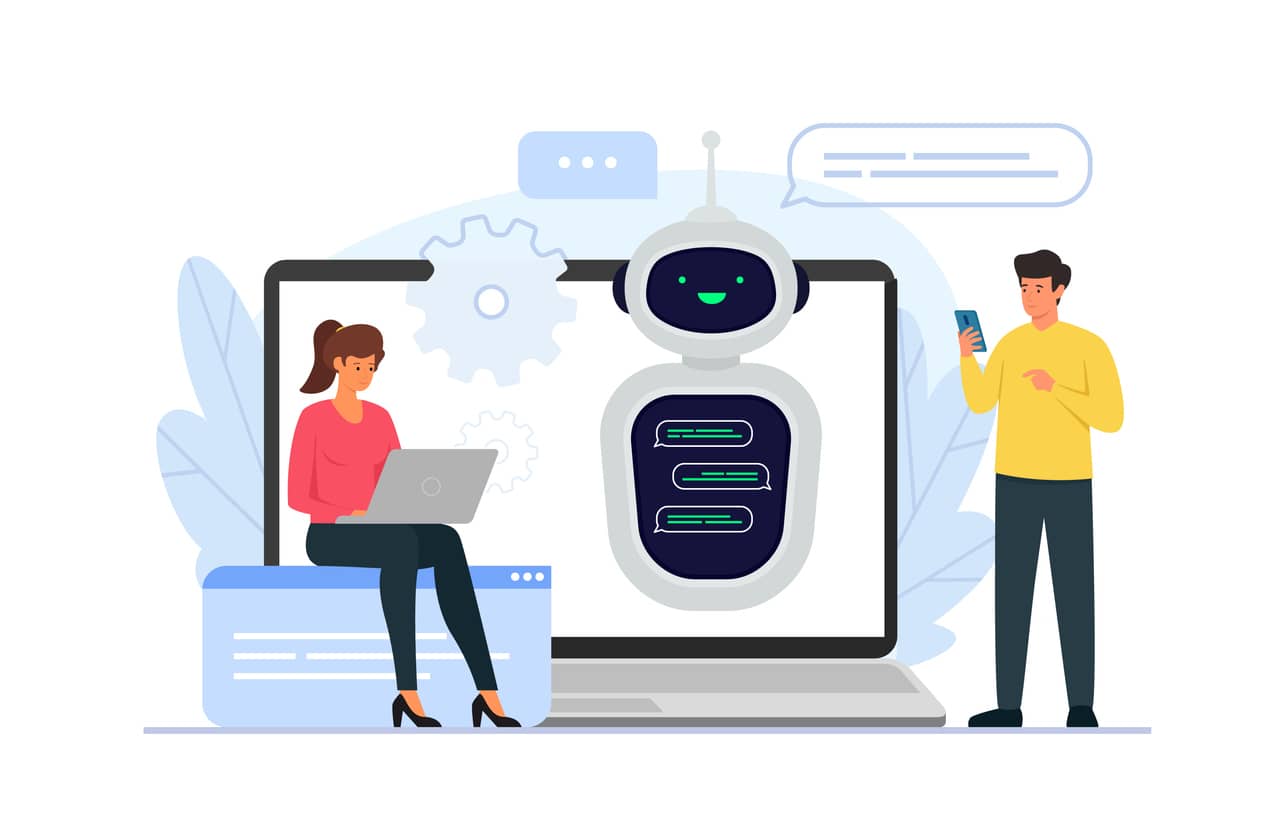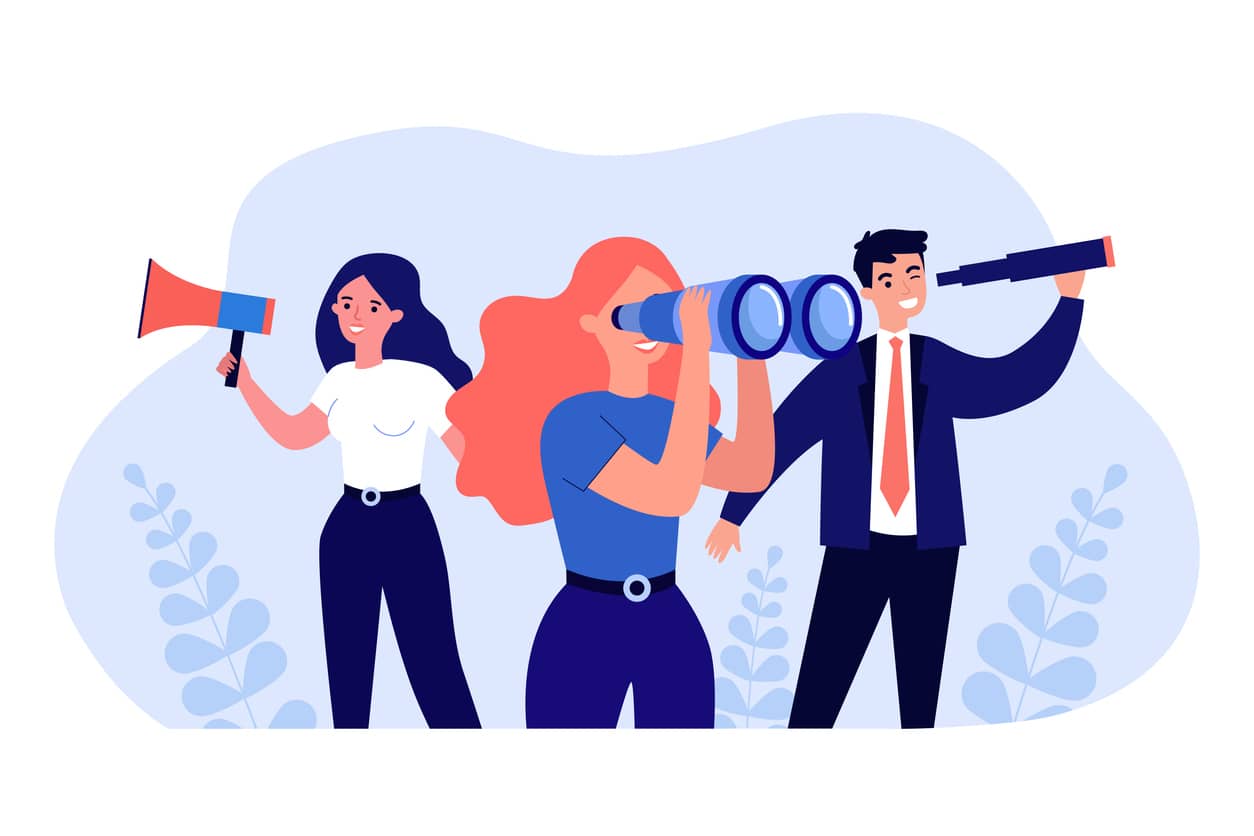How does AI impact work?
Artificial Intelligence (AI) is changing how we work in a big way. It’s not just about getting things done faster; it’s about freeing time for people to focus on tasks that need human skills, like understanding emotions, thinking critically, and being creative. AI helps by taking care of repetitive jobs, so we can spend more energy on the things that require our unique abilities.
AI isn’t just a time-saver; it’s also a super tool for handling information. It helps us quickly process vast amounts of data through AI-enabled information retrieval. That means we can make smarter decisions faster. Platforms like Powell Intranet and Powell Governance are great examples of how integrating AI into tools makes processes inside companies much smoother. They use AI to help people share knowledge and work together more efficiently.
But AI isn’t just about making current tasks easier. It’s also changing how whole industries work. It’s so intelligent that it can predict things and solve problems before they happen. This isn’t just making things faster; it’s creating new ways for businesses to do their thing, from making supply chains work better to giving customers more personalized experiences.

Will artificial intelligence replace all of today’s professions?
The concern about AI entirely replacing human jobs is a common narrative. And in truth, AI will displace a significant number of jobs. The World Economic Forum estimates that AI will replace 85 million jobs by 2025. On the flip side, AI could generate 97 million new jobs.
Recognizing that AI’s impact isn’t solely about job replacement is essential. Here’s a closer look at how AI affects the workforce:
Task Automation, Not Job Replacement: AI is adept at automating specific tasks, but it doesn’t necessarily mean complete job elimination. It targets repetitive and mundane tasks, freeing time for humans to focus on higher-value work that requires emotional intelligence, critical thinking, and creativity. According to McKinsey, by 2030, an estimated 30% of the tasks performed in the US workforce could become automated, with Generative AI likely to speed up this transition. In a survey conducted by the Harvard Business Review involving 250 executives, the primary advantages of AI were identified as process optimization and task automation. Headcount reduction ranked lowest on the list, with only 22% acknowledging it as a beneficial outcome.
Creation of New Job Opportunities: Interestingly, AI generates fresh job roles that rely on human skills that machines can’t replicate. Due to AI’s integration, professions demanding empathy, adaptability, and complex problem-solving are emerging. These roles complement AI technology, emphasizing the importance of human qualities.
Augmentation of Human Capabilities: Rather than acting as a replacement, AI often acts as a supportive tool, enhancing human capabilities. Handling routine tasks allows workers to concentrate on tasks that necessitate unique human skills, thus making the workforce more efficient and proficient in their roles.
In essence, AI doesn’t simply erase jobs; it reshapes them. Its impact lies in the augmentation and evolution of human roles, creating a synergy between technology and human capabilities. This symbiotic relationship between AI and human skills opens up new avenues and enriches the workforce in previously unexplored ways.
While AI and its impact on jobs can be worrisome, it’s important to remember that careers constantly evolve. For many of us, the jobs we have today did not exist in our grandparent’s era. A report from MIT suggests that 60% of jobs today were not around in 1940.

Has artificial intelligence reached its peak, or will it continue to impact our industries?
The evolution of Artificial Intelligence (AI) is an ever-changing journey that knows no limits. It’s not static; instead, it’s in a constant state of development, consistently pushing the boundaries of innovation across various sectors.
As AI progresses, its impact extends far beyond specific industries. In fields like healthcare and customer service, AI’s ongoing advancements are transforming how services are delivered, enhancing efficiency and improving outcomes.
Generative AI, an exciting frontier in the AI landscape, showcases its prowess in generating content autonomously. This streamlines processes, amplifies creativity, and tailors personalization to unprecedented levels.
The power of OpenAI for the digital workplace exemplifies the potential for AI to optimize operations, enhance decision-making processes, and streamline complex tasks. Its integration fosters a more efficient and seamless work environment, paving the way for a future where AI augments and complements human efforts, leading to unparalleled productivity and innovation.

Is artificial intelligence an advantage or a threat?
The AI debate often centers on whether it’s a blessing or a curse. In reality, its impact is nuanced. While AI offers unparalleled efficiency and innovation, job displacement and data privacy concerns persist. However, when harnessed ethically and responsibly, AI can be a powerful tool that complements human skills, transforming industries for the better.
AI as an Advantage
Increased Accessibility: AI technologies, such as live captioning, automatic transcriptions, adaptive interfaces, and robotic assistance, significantly enhance workplace accessibility. These innovations cater to diverse needs by providing real-time support for individuals with hearing, visual, and physical impairments.
Source: “How AI Will Impact The Next Generation Workforce” (Forbes)
Enhancing Decision-Making: AI can analyze large data sets more efficiently than humans, providing insights that aid in better decision-making.
Source: “Artificial Intelligence for the Real World” (Harvard Business Review)
Job Creation: New technology sectors and roles related to AI, such as AI specialists and data scientists, create new job opportunities.
Source: “Jobs of Tomorrow: Mapping Opportunity in the New Economy” (World Economic Forum)
AI as a Threat
Job Displacement: AI and automation may lead to the displacement of workers in certain sectors, particularly in routine and manual jobs.
Source: “Jobs lost, jobs gained: Workforce transitions in a time of automation” (McKinsey & Company)
Ethical and Privacy Concerns: The deployment of AI in the workplace raises concerns about security, privacy, and decision-making biases.
Source: “Great promise but potential for peril” (Harvard Gazette)
Skill Gap and Inequality: There’s a risk of increasing inequality, as AI demands higher-skilled workers, potentially leaving behind those with fewer skills.
Source: “The Future of Jobs Report 2023” (World Economic Forum)
AI and the future of work: Perspectives and recommendations
Individuals and organizations must adapt to thrive in the future work landscape shaped by AI. Investing in upskilling and reskilling programs is crucial to equip the workforce with the skills to collaborate effectively with AI. Embracing a culture of continuous learning, leveraging AI for problem-solving, and integrating it seamlessly into workflows will be pivotal.
In conclusion, the future of work intertwined with artificial intelligence is a realm of endless possibilities. By leveraging AI’s capabilities while nurturing human skills, we can create a future where technology augments our potential, transforming industries and fostering a more efficient and adaptable workforce.
